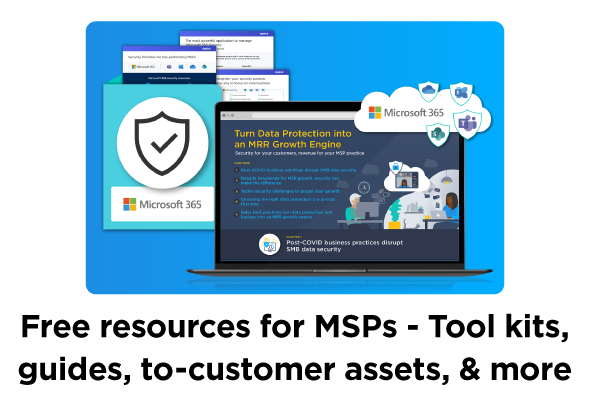For Exchange to Microsoft 365 migrations, SkyKick can pretty much move it all. From your basic email, calendar, and contacts data to email signature blocks, rules, and calendar permissions, we’ll make transitioning your customers from Exchange to Microsoft 365 easy and low-risk.
As a 100% partner-focused company, we built our solution to help IT partners deliver customer value, reduce complexity, and increase sales velocity. As a Microsoft 365 tool, SkyKick complements technical teams to create the easiest way to migrate SMB customers from Exchange to Microsoft 365.
Migration Product Options
At SkyKick, we know there’s a big difference between migrating a few desk-less workers and migrating an entire enterprise-level organization. SkyKick offers two different migration products to meet your customer’s unique environment.
| DATA / SETTINGS | FULL SUITE | DATA-ONLY |
Migration sources
Frequently asked questions
What makes SkyKick migrations different from other Exchange mailbox migration tools?
As a 100% to-partner company, we built the SkyKick Migration Suites to provide IT partners with an automated migration tool to accelerate their cloud business with comprehensive planning, accurate provisioning, no lost data, and a great end-user experience. Unlike other Microsoft 365 migration tools that focus primarily on moving server-side data—one step in a comprehensive migration project—SkyKick technology automates manual effort across more facets of a migration project, including provisioning, migrating client-side data, and setting up Outlook profiles in Microsoft 365, to help partners manage all the essential steps across a migration project and deliver customers a seamless migration experience.
How can I get started with an Exchange to Microsoft 365 migration?
The best way to get started with an Exchange to Microsoft 365 migration is to explore the Migrations Full Suite vNext Guide: Exchange to Microsoft 365 in the SkyKick help center.
Do you migrate every version of Exchange to Microsoft 365?
SkyKick performs migrations to Microsoft 365 from every version of Exchange from 2010 onward. For more information, see What We Migrate.
How do you perform Exchange Server to Microsoft 365 migrations?
For Exchange to Microsoft 365 migrations, SkyKick can pretty much move it all. From your basic email, calendar and contacts data to email signature blocks, rules and calendar permissions, we’ll make transitioning your customers from the Microsoft Exchange Server to Outlook 365 easy and low risk.
What kind of data can be migrated in an Exchange to Microsoft 365 migration?
SkyKick migrates server-side data, including email, calendars, tasks, contacts, and inbox rules for individual mailboxes, shared mailboxes, as well as public folders and associated permissions. SkyKick also migrates local client-side data, including auto-complete and email signature blocks.
How long does it take to perform an Exchange to Microsoft 365 migration?
Because no two migrations are identical, it is difficult to predict precisely how long a migration from Exchange to Microsoft 365 will take. This is due to a variety of factors, including migration method, data source, data type and density, network performance, end-user engagement, and throttling, that can extend the duration required to complete the migration. However, SkyKick makes it easy to schedule and adjust a migration date, scope, and requirements, depending on the desired timeline. If you are an IT partner with a specific migration project, contact support@skykick.com for more information on the timeline.
How much does SkyKick charge to migrate public folders?
Unlike other email migration vendors, SkyKick charges the same price for public folders as mailboxes.
How does SkyKick reduce the risk of data loss in Exchange to Microsoft 365 migrations?
SkyKick migration technology automatically processes data at the nearest regional Microsoft Azure data center in the country where the Microsoft 365 tenant specified in the Migration Planner is located. All email content remains in the region during a migration. This includes compute, path of information from source to destination, and storage of metadata/state files. This information is transferred directly from the source server to Microsoft 365. At no time is data written to disk, stored, or taken possession of by SkyKick. For more information see Migration Security.
How do SkyKick migrations interact with directory synchronization (e.g. AD Connect)?
Directory synchronization is not required for Microsoft 365 or SkyKick Migrations. However, if the company being migrated wants to implement directory synchronization, SkyKick technology can still be used. For more information, see Configuring Active Directory Synchronization for an Microsoft 365 Migration.
Does the SkyKick Outlook Assistant have any requirements?
The SkyKick Outlook Assistant is a powerful, yet lightweight client application to connect customer end-users to their new mailbox at the appropriate time and replicate their previous Outlook experience as closely as possible. It:
- Performs desktop and Outlook readiness checks.
- Guides customer end-users through the M365 authentication process to their new mailbox
- Migrates supported local data and settings (i.e. signature blocks and address autocomplete) where present.
For more information and requirements see Outlook Assistant 9.0 Overview.
Is SkyKick HIPAA compliant?
SkyKick conforms to all the HIPAA requirements of a Business Associate. It can therefore sign and fulfill the elements contained in its Business Associate Agreement (BAA) (once completed and signed by a covered entity performing the migration). The BAA contains the elements specified at 45 CFR 164.504(e), including:
- A description of the permitted and required uses of protected health information by SkyKick.
- The provision that SkyKick will not use or further disclose the protected health information other than as permitted or required by the contract or as required by law
- Requirements to use appropriate safeguards to prevent a use or disclosure of the protected health information other than as provided for by the contract.
For more information, see HIPAA Compliant Migrations.



